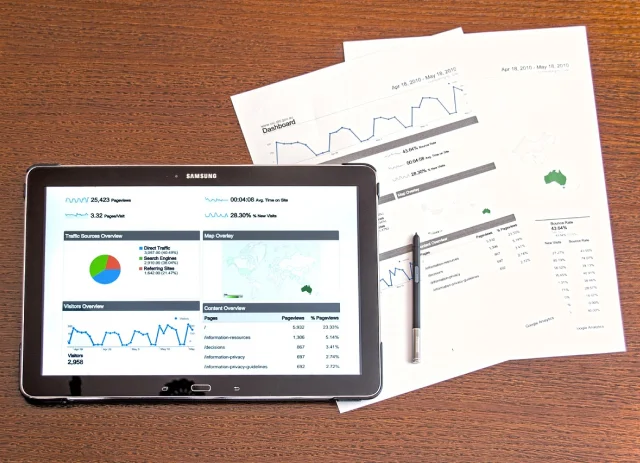A marketing plan development is critical for businesses to guarantee that marketing activity matches goals. It sets up a unique sales offer, determines who customers are, and attraction approach.
Indeed, the creation of an effective marketing plan demands meticulous research and an impressive number of hours, but this is the best way to determine where you are (situation), where you want to be (goals), and how you can reach (marketing activity). In addition, a marketing plan lets to describe initiatives and strategies in content creation, helps to follow successful actions, and offers changes on a results base.
What are the advantages of a marketing plan?
The creation of a strong marketing plan is important for business. It guarantees that you use a preventive approach to focus on goals and how successfully to achieve them. Should they find and possess new clients, present new products, and increase sales or brand awareness?
So you can transfer your documented plan to other people in business for a transparent overview of planned marketing and advertising strategies and how they support and determine business goals. Sharing a plan will mean that different business industries will understand and, even more, support it.
Marketing planning process
Step by step process provides a marketing plan in accordance with business goals. Easy say, you need to determine strategy the “what” and then tactical plan the “how”. The “What” is research that you need to do. As soon as it’s stated, it will inform the plan of the “how”.
The steps in the marketing planning process are:
Determination of the “What”:
– What is the current situation?
– Who are the competitors?
– What is the target audience?
– What are goals?
Determination of the “How”:
– Which actions better fit the “how”?
– Determination of the marketing budget.
– Overview and score.
Development of the “What”
What is your current situation?
You need good market understanding to be guided by this and work with SWOT analysis. Determine strong and weak sides, opportunities, and threats. Then, there are a couple of questions that you can answer:
What is the success you achieved?
Which spheres of your business are more or less profitable?
What’s people think about you in the market?
What’s your part of the market?
What can you say about your products?
What’s happening in the current market?
What are the barriers?
What do competitors do in the same space, and how are they successful?
What are additional external factors?
Who are your competitors
Research those who provide the same products and services. Looking over the differences will help to see aspects of products that are more attractive. It’s the unique selling point (USP). For example, are their products cheaper, stronger, easier to exploit, or more accessible? Then you can use these unique characteristics and their fortes with help from messages about products and how you sell them. Research how competition affects markets and what the results are. It helps you to display successful strategies and even use those you never thought of, which can give you an advantage.
Who is your target audience
In which segment do you work? First, determine the group of people who need your products and service. Then, after everything is outlined, you can rightly orient in the segment, using the proper channels and language, and showing the right price at the right time. List attributes and typical behaviors such as:
Demographic data: sex, age, income.
What are their interests?
What do they need?
What are their values and relationships?
Which products and services do they already use?
When you determine clients, you can create their profile and receive a clear understanding of how better to reach them based on marketing strategies, which make them react in the best way.
What are your goals?
Ask yourself, what do you want to elevate or achieve? Think about general goals. Selected marketing goals can help add necessary upgrades to the business, as mentioned in the business plan. They will inform actions and channels that include in the tactical plan. Your measured goals may relate to sales quotas, the number of new clients, customer retention percent, revenue, market share, brand awareness, site traffic, or social media engagement targets. For example, instead of “attract more clients,” you can work with something like “get ten new clients during the week.” Instead of “income increase,” try to work with “increase income for 5% per year”. Do you see the idea? Do one more step and think about how you will achieve these results through selected marketing channels with recently mentioned common marketing goals based on increased income and number of clients. Pick goals for them as well.
Development of the “how.”
Which marketing tactic would you use for goal achievement? Your identified audience determines your chosen tactic to move closer to it. It will include channels and content that you will use. Always pay attention to your voice tone and language during content creation. For example, you make and sell handmade products on the internet. One of the goals can be a sale increase for ten products per week. You chose main marketing channels, such as social media networks (where the selected audience is active) and email, based on client profiling. In this way, your strategy can be about using social advertising to convince people to subscribe to a mailing list, then automatic email series to tell clients more about you, your business, and your products. Each email can focus on an individual product and finish with a clear call to action with information regarding how a client can purchase.
As a company’s technical part, you’ll need good-quality marketing data to find the most valuable contacts.
What else to look for when writing a marketing plan
After you perform the process, it is time to fulfill the plan.
What does include marketing plan?
1)Resume
It will help if you write a resume after making all the plans and know how to summarize. It should include the company’s goals.
2)The target market
Add here industry and competitors analysis, as well as detailed information about the target audience (people who buy from you), which you determined in the process earlier.
3)Marketing activity
Browse the marketing goals you determined, actions and plans you decided to reach, and how you will measure them. It should include the channels you will use, the budget demanded, and awaiting results.
4)Results and review
You should document results next to each action in the plan to help you score the success and add necessary changes after your plan comes into effect and marketing events start.


